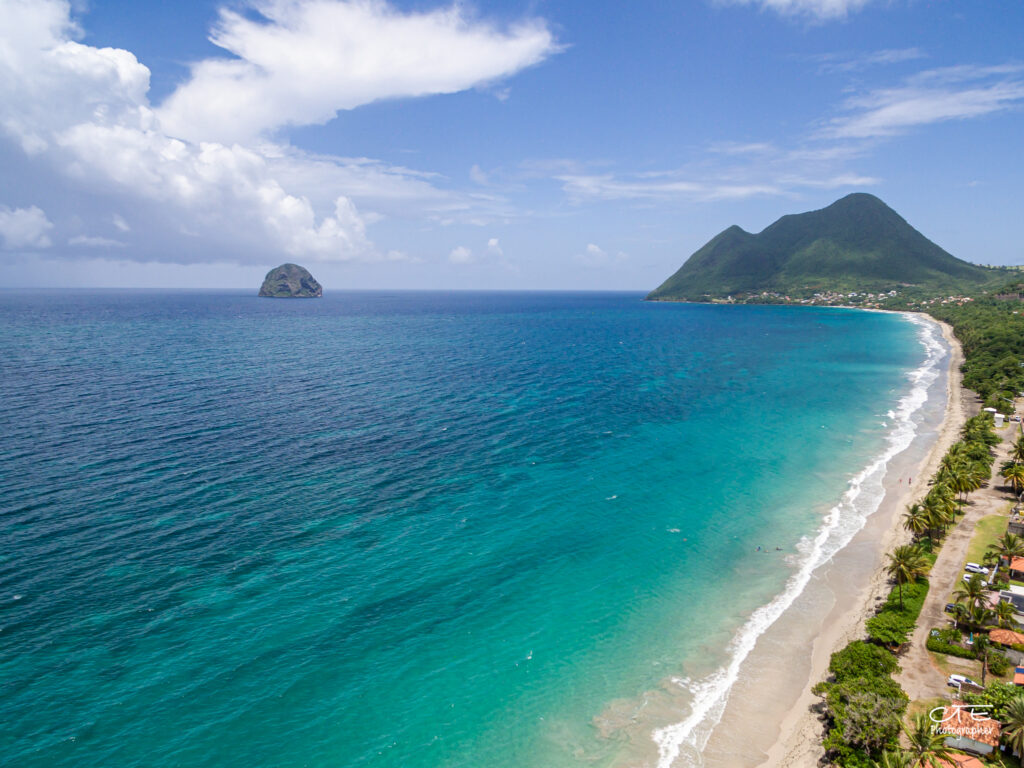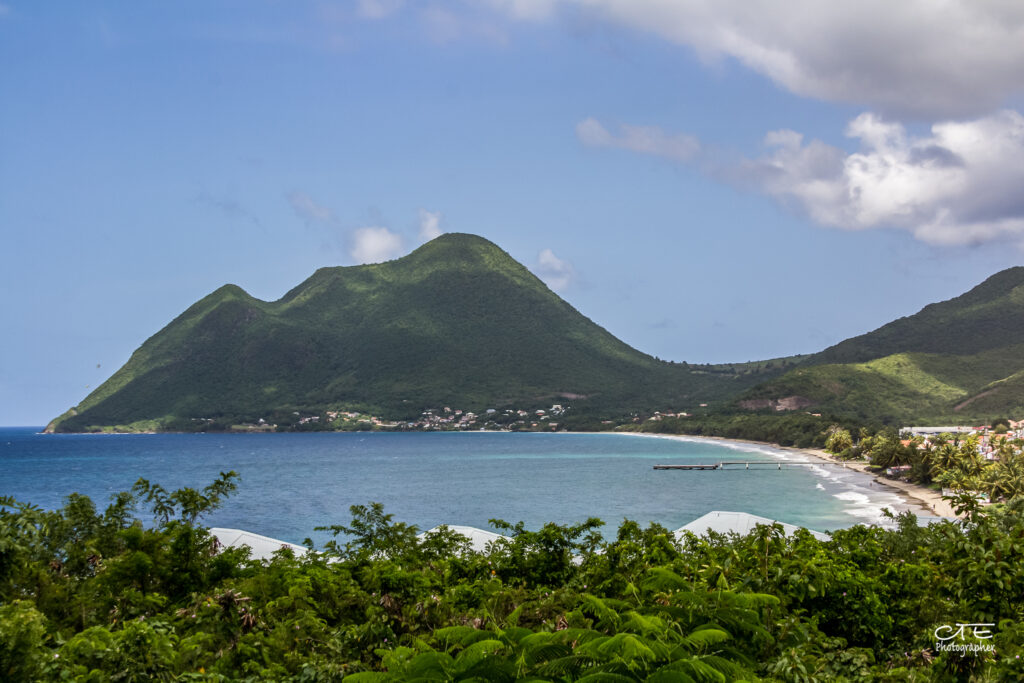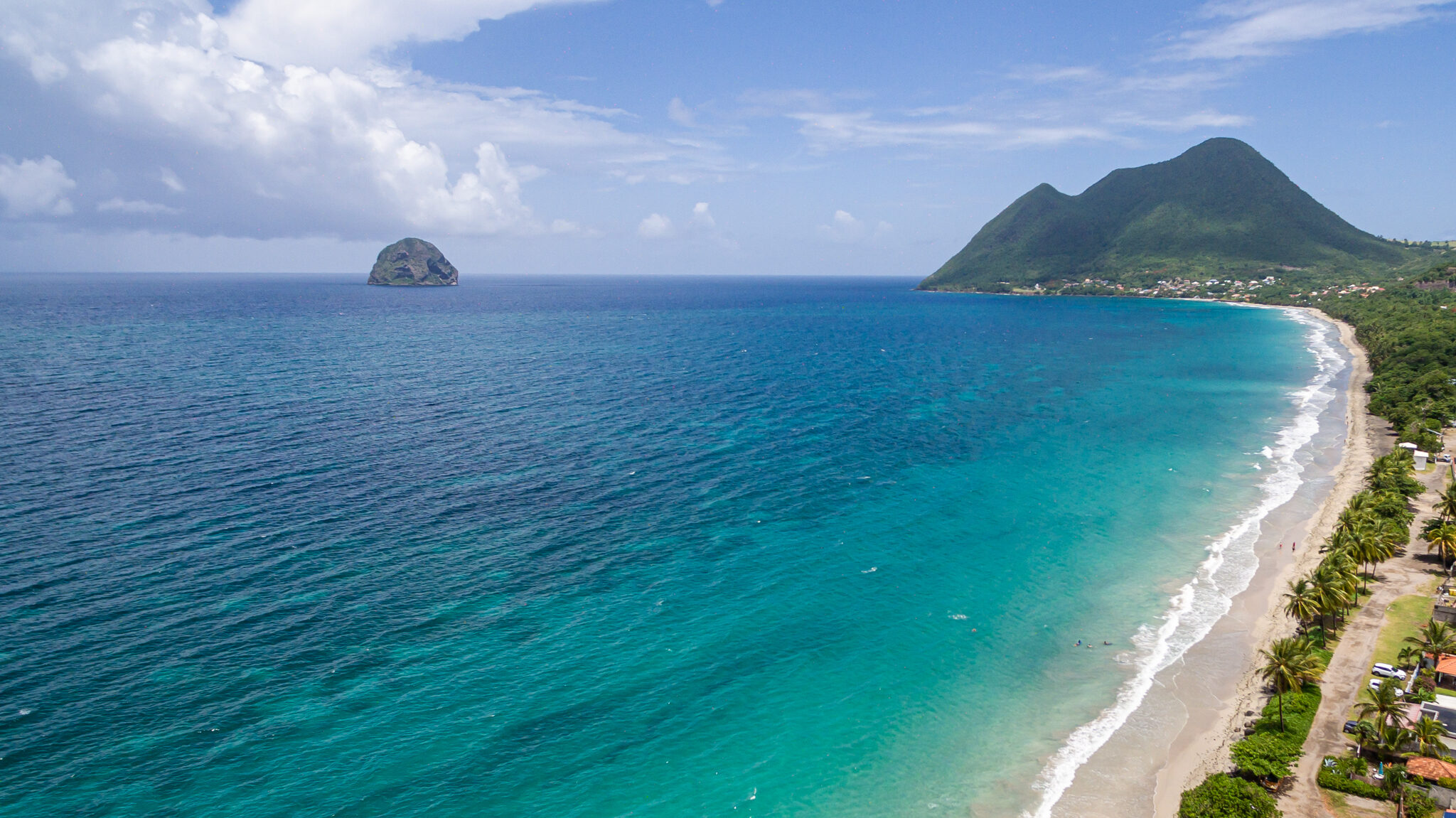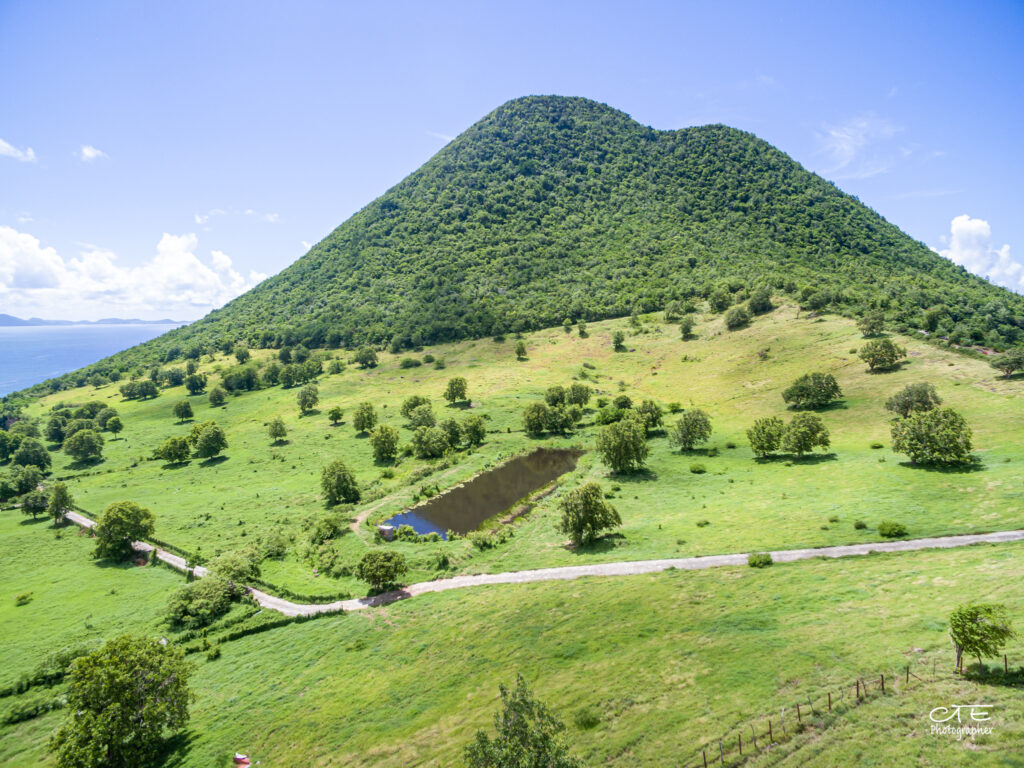
Morne Larcher in Diamant
Description
Located on the south coast of the island in the town of Diamant, Morne Larcher is an extinct volcano (1 million years ago) with a height of 478 m. It is part of a volcanic chain born from the fracture that crosses the Trois-îlets peninsula, formed by Morne Champagne, Morne Genty and Rocher du Diamant.
Morne Larcher is formed by a caldera like Mount Pelée created by the collapse of its dome. This caldera today forms a pass through which the discovery walk takes place.
Much appreciated by walkers for its very special view of the Rocher du Diamant, Le Morne dominates the southwest coast of the island. It is known for its shape, which, seen from the beaches in front of it, resembles a reclining woman. Depending on the angle of vision and the imagination of each one, one can indeed see in this relief a face and the body of a woman with the mountains extending to the right of Le Morne. This is why it is called “Femme couchée”.
The discovery of Le Morne is done on foot and is one of the most famous in Martinique. With a positive difference of 250m, it invites you to climb quickly and undergoes a steep ascent for 400m.
The vegetation, the viewpoints, the ponds and its duckweeds (subfamily Lemnoideae), are the charm of this hike in the dry forest of southern Martinique.
Biodiversity
On the way to the top of Le Morne, the forest is dry to moderately humid (xero-mesophilic) and the vegetation that develops there is composed mainly of West Indian bay tree or bay rum tree (Pimenta dioica and Pimenta racemonsa), but also kapok (Ceiba pentandra), blackwood or campeche logwood (Haematoxylum campechianum), indian borage (Plectranthus amboinicus), pink manjack (Tabebuia heterophylla) and gumbo-limbo (Bursera simaruba).
At the top, there are several important species, including two rare species present only in this place in Martinique: the copey vera (Ternstroemia peduncularis) and the cockspur (Xylosma buxifolium).
As for the fauna, it is home of the lesser Antillean iguanas (Iguana delicatissima).
Ecotourism potential
Access to Morne Larcher can be done in both directions, leaving or arriving from Petite Anse or Anse Caffard, in 2h 30 to 3h by foot (3.5 km).
From Petite-Anse (Diamant) you cross the pass between the summit and another hill (Croix Diamant) to reach an altitude of 400 m. The vegetation being impenetrable at the top, you have to ignore the remaining 78 meters of unevenness, but it is possible to admire the bay, the Rock, the coast and the southern lands of the island.
Informations
-
-
Location
Martinique (Diamant)



